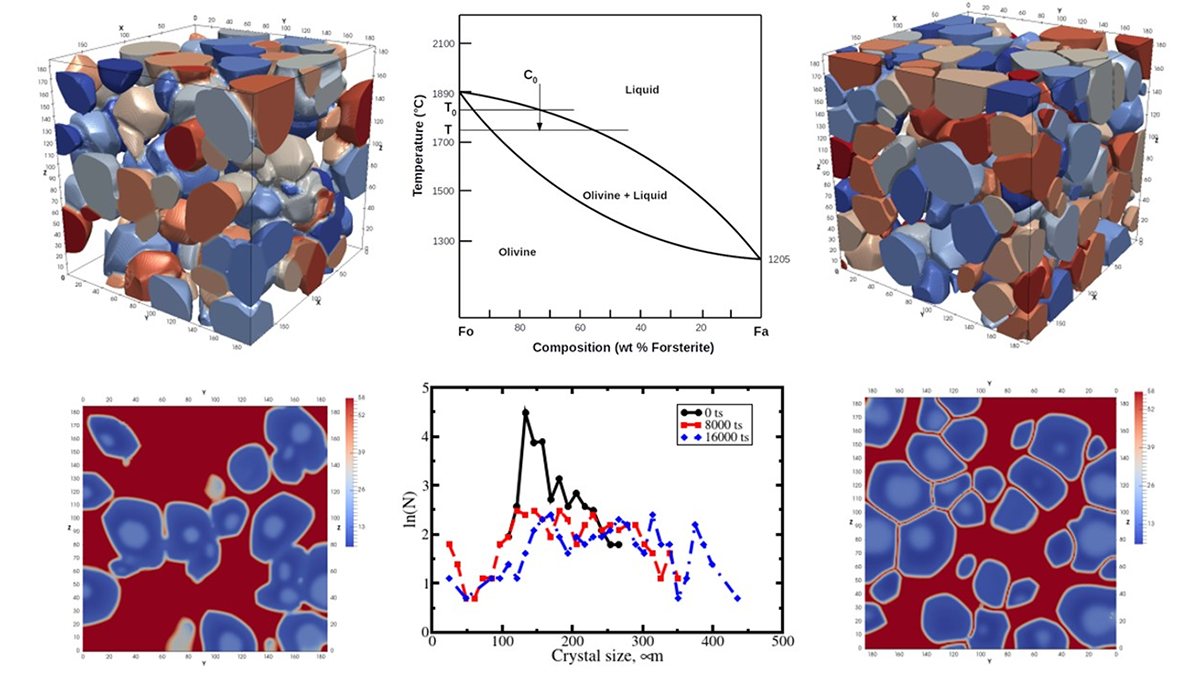Editors’ Highlights are summaries of recent papers by AGU’s journal editors.
Source: Journal of Geophysical Research: Solid Earth
Kundin et al. [2023] present a new computing tool of modern mineralogy that predicts the microstructural evolution of magmatic systems under solidification. The authors developed further the phase-field function approach introducing ϕ(x,t) (1 when a crystal phase or 0 when a melt is present at a given point in space). By taking into account energetics of crystal surfaces and interfaces in bulk thermodynamics the authors input these individual phase parameters into minimization of the total Gibbs or Helmholtz Free Energy Functional of the system for resolving ϕ(x, t). As a result, the neat geometry and space distribution of crystalline phases is obtained for a mineralogical system under cooling.
The model can be used in case of arbitrary number of crystal types by using a set of phase field functions ϕα(x, t). The free energy of a multi-phase system with N phase fields is formulated as a sum of two terms: the interface energy term and local chemical potential disequilibrium term. The authors demonstrated the strength of the method on two examples, the olivine – melt system solidification at constant undercooling and the plagioclase – melt system crystallization at a constant cooling rate.
The developed computing code may directly couple the phase-field functions with existing mineralogical phase diagram software and operate in conjunction with free energy minimizing software packages for mineralogical systems.
The presented method of modeling may be used as a crucial argument to distinguish between the in-situ crystallization of mushy zones and in cumulate piles resulted from sinking crystals in magma reservoirs. Another field of application of the suggested method is the modeling and interpretation of crystal zonation, the modelling permits to connect CSD analysis of rocks and diffusion chronometry obtained on individual crystals.
Citation: Kundin, J., Steinbach, I., & Chakraborty, S. (2023). Phase-field simulation of texture evolution in magmatic rocks. Journal of Geophysical Research: Solid Earth, 128, e2023JB026718. https://doi.org/10.1029/2023JB026718
—Nikolai Bagdassarov, Associate Editor, JGR: Solid Earth

